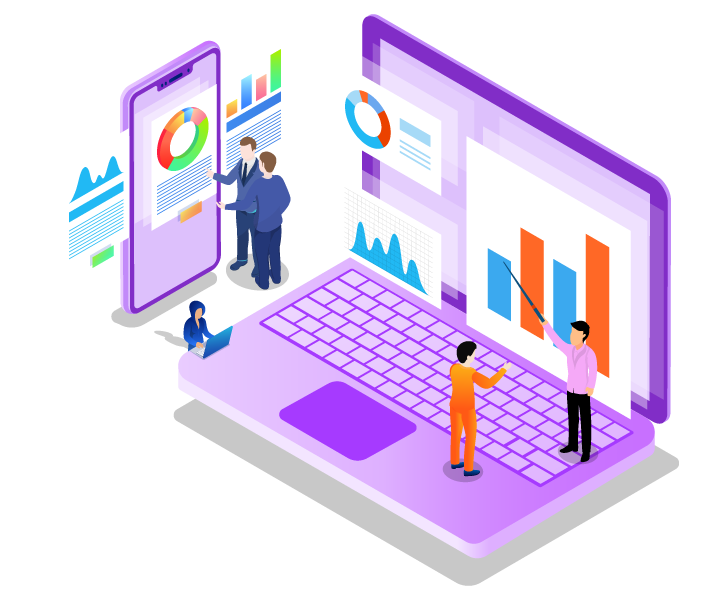In the fast-changing workplace of today the method we use to manage and maintaining devices has transformed. The old way of dispersing laptops at work is no longer necessary because the workplace has moved to hybrid and remote working arrangements. Instead, a more complex process called Device Lifecycle Management was introduced. Managed Desktop Service (MDS) has become an integral part of this new approach, helping to streamline organizations’ processes and improve the end-users’ experience.
Device Lifecycle Management (DLM) commonly referred to DLM is the process of managing a device’s lifecycle from the moment it is purchased until it’s retired. It involves many processes, including procurement of maintenance, provisioning and removal at the end the life. DLM in the traditional office was a simple process. The remote work environment adds layers and challenges.

In the new environment IT managers are struggling with managing assets and logistics at every stage of a device’s lifecycle. This change is driven primarily by the desire to accommodate the diverse requirements of remote workers and employees who are hybrid. It is now essential for businesses to use effective solutions. Managed Desktop Service is one of the most popular.
Managed Desktop Service: A remote work enabler
Managed Desktop Services, also known as MDS is a full-featured management solution that streamlines the management of devices used by end users. The service offers a complete solution for provisioning, sustaining and assisting devices, which makes it a vital instrument for IT administrators. Here’s how Managed Desktop Service is helping organizations navigate the challenges of remote work:
Managed Desktop Service aims to enhance end-user experiences. It tackles common issues that remote workers encounter, such as delayed equipment initialization, long-running software upgrades as well as the slow repair and replacement process. In making sure employees have the appropriate tools and resources at their disposal at any time they need these, MDS can significantly improve job satisfaction and overall productivity.
Managed Desktop Service streamlines the deployment of new devices to employees who work from remote locations. MDS allows businesses to rapidly and efficiently share laptops and other equipment needed by new employees so that they can start working right away. This can reduce the frustration employees feel when they are forced to wait in line for their devices or are delayed in their work.
Effective Software Updates: Managed Desktop Service helps IT teams manage patches and updates for software more effectively. You can schedule updates for time periods that are not disruptive, which guarantees that employees won’t be affected while they work on their tasks. This eliminates the possibility of employees facing interruptions during important meetings or video calls.
Rapid Repairs or Replacements: In remote working environments, it is important to replace or repair malfunctioning devices as quickly as you can. Managed Desktop Service Providers often have strong support systems, which assure that employees receive prompt assistance when they encounter problems with their devices. It not only reduces downtime, but also the risks of cyber-attacks caused by the use in an emergency of personal devices, or insecure devices.
Cost-Efficiency: Organizations can reduce expenses by outsourcing management of the user device to Managed Desktop Services providers. This reduces the requirement to employ staff internally to manage devices, minimizes interruptions due to outdated equipment, and improves the efficiency to manage the lifecycle of devices.
The Impact of Employee Engagement and Turnover
The effectiveness and efficiency of the device lifecycle process has a direct impact on employee engagement. Employees who are frustrated due to device issues may become disengaged and even consider looking for new opportunities. Inefficient DLM can have a significant effect on engagement of employees.
Companies who invest in Managed Desktop Service, and a Device Lifecycle Management Strategy can provide a stimulating and enjoyable work environment. Employers who are equipped with the appropriate tools and are less prone to disruptions are more likely to remain with their employers. This will reduce the turnover of employees and associated costs for recruitment and training.
Cybersecurity threats: How do reduce them
Cybersecurity is an important priority for organizations in the age of remote work. Without proper management of devices employees might resort to using their personal devices or those that are not secured which could pose serious security risks for the company’s data and security of the network.
Many Managed Desktop Service providers have robust cybersecurity protocols in place. They are able to ensure that each device is up updated with the most current security patches and that the data is secured and encrypted. This proactive approach helps companies mitigate risks and maintain secure remote working environments.
The conclusion of the article is:
The importance of Managed Desktop Service and Device Lifecycle Management can’t be overstated as the landscape of work continues its development. These services are crucial to companies that wish to adjust to hybrid and remote working. By focussing on improving the user experience, streamlining device provisioning and improving cybersecurity organisations can improve productivity, lower turnover and create a safe and engaging work environment in this new era of work. Accepting the changes in managing devices is not only a reaction to changing new times. It’s a step towards a more efficient and more competitive future.